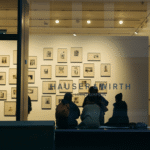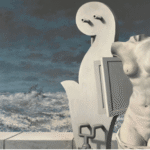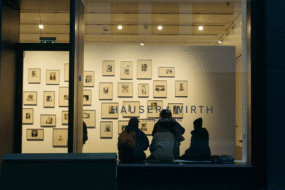
Unlock the Editor’s Digest for free
Roula Khalaf, Editor of the FT, selects her favourite stories in this weekly newsletter.
Much is hanging on Frieze London. The annual art fair, kicking off next week, serves as a barometer for the wider market and a platform for emerging talent and trends. They need all the help they can get.
Interest in art pieces at the top end of the spectrum is dwindling, and overall sales last year dropped 12 per cent to $57.5bn, according to Art Basel and UBS. That suggests the art market appears to be more tethered to Main Street than, say, the record highs in the S&P 500 and FTSE 100. Sales in China, with a lacklustre economy and imploding property market, fell by a third last year.
Auction houses such as Christie’s and Sotheby’s, where much of the world’s traded art changes hands, bear the scars. The latter, owned by billionaire Patrick Drahi, doubled pre-tax losses last year.
A similar picture emerges in other areas of highly discretionary spending, be it flagging sales of London prime property or personal luxury goods. Unlike frocks and handbags, art carries attendant costs, from transaction fees to insurance and maintenance, possibly with shipping and storage on top.

Tariffs and taxes further harm art sales — both directly and by impacting on buyers’ wealth. Not for nothing did Italy, a historic home of western art, cut value added tax on artworks from the standard 22 per cent to just 5 per cent in July. Wealthy collectors’ appetite has been hit by US talk — still only talk — of increasing taxation of the “carried interest” used to reward private equity managers. The UK’s removal of special treatment for “non-doms” in April had a similar effect, say industry sources.
Still, look at any picture long enough and there’s usually something to like. Measured by volume, not value, sales inched upwards last year. That contrasts with other downturns, such as the financial crisis in 2009 when both numbers and prices of transactions fell, and shows support at the more affordable end of the spectrum. Good news for Frieze, which features emerging talent as well as established artists.
Another point in art’s favour is that investors tend not to sell into a downturn. Undeterred by the slump, millionaires are still hanging on to art. UBS puts the average holding for those with more than $1mn at 15 per cent, and the wealthier the investor, the more they set store by it. Even in a jaded world, art is about more than just financial returns.









